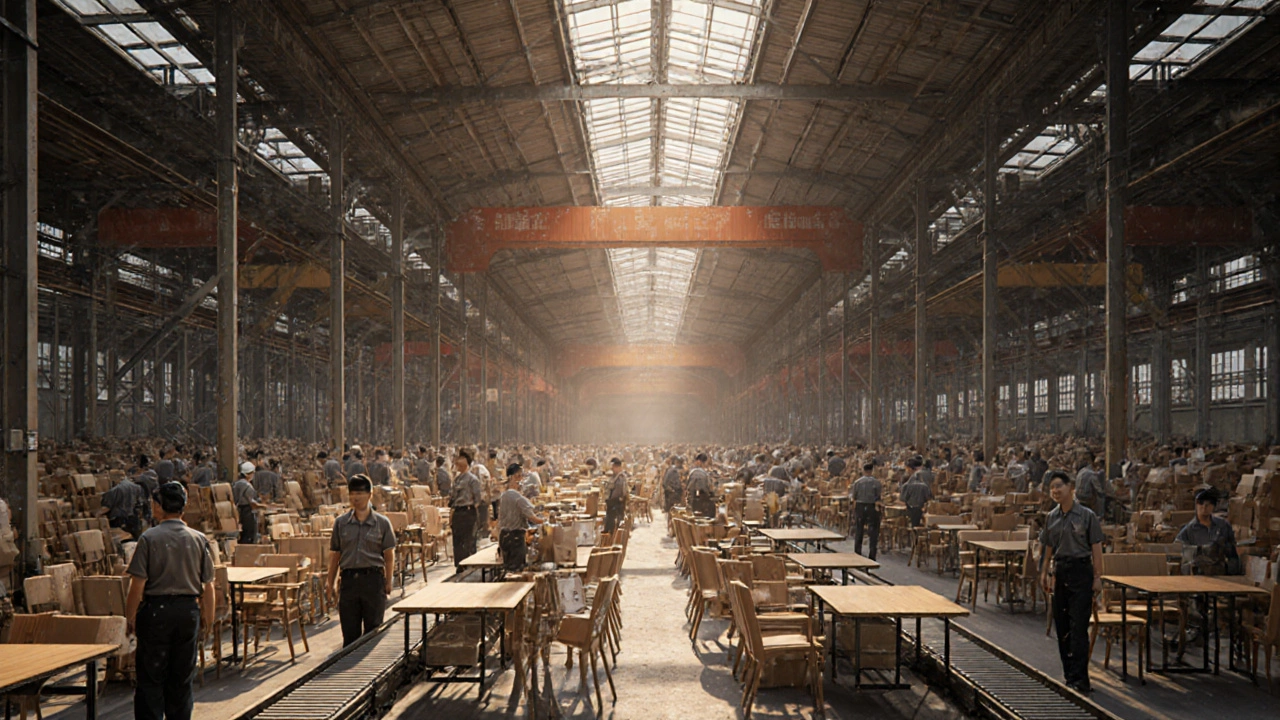
Who Is the World's Largest Furniture Producer? An In-Depth Look
Explore why China tops global furniture production, see the leading manufacturing nations, and learn about the biggest furniture companies shaping the market.
Did you know that China builds more than half of the world’s furniture each year? When working with Furniture industry in China, the massive network of factories, designers, and distributors that produce everything from budget office chairs to high‑end living‑room sets. Also known as China’s furniture sector, it drives global supply, sets price benchmarks, and fuels design trends worldwide. The sector’s pulse is shaped by Chinese manufacturing, a broad base that supplies the tooling, automation, and labor needed for large‑scale production, and by the wood supply chain in China, which links forest harvests, engineered panels, and recycled material streams to factory floors. International demand flows through the China furniture export market, a channel that moves finished pieces to Europe, the Americas, and fast‑growing Asian economies.
The manufacturing backbone relies heavily on three production methods: high‑speed CNC machining for flat‑panel furniture, robotic assembly lines for mass‑produced office sets, and artisanal hand‑crafting for premium designer pieces. Each method influences cost, lead time, and design flexibility. For example, CNC routing enables intricate lattice backs on sofas while keeping waste low, whereas hand‑carved details command higher price points but appeal to niche luxury buyers. Government policies, such as the 2023 “Made in China 2025” initiative, push factories toward greener processes, low‑emission adhesives, and digital twins that simulate production before a single cut is made. These moves not only improve efficiency but also help Chinese exporters meet strict EU and US environmental standards.
Supply chain dynamics add another layer of complexity. Domestic timber harvests have plateaued, prompting factories to lean on imported hardwoods and increasingly on engineered wood products like MDF and particleboard. The rise of sustainable sourcing certifications—such as FSC and PEFC—means buyers now scrutinize a piece’s material pedigree before signing a contract. Meanwhile, e‑commerce platforms like Alibaba and JD.com have turned the traditional showroom model on its head, letting small‑batch designers showcase collections directly to global shoppers. This digital shift accelerates product cycles: a design can go from CAD file to shipped sofa in under 30 days, a speed unheard of a decade ago.
Below, you’ll discover articles that break down the most pressing topics for anyone watching the Chinese furniture space. From practical guides on picking winning product ideas for a manufacturing startup to deep dives on the world’s top plastic and chemical producers, the posts illustrate how China’s furniture sector intersects with broader industrial trends. Expect actionable insights on market validation, cost‑effective production methods, and the regulatory landscape that shapes export opportunities. Whether you’re a designer, supplier, or investor, the range of content here gives you a clear roadmap to navigate China’s ever‑evolving furniture industry.
Ready to dive into the specifics? Scroll down to explore each article and pick up the knowledge you need to make smarter decisions in the fast‑moving world of Chinese furniture manufacturing.

Explore why China tops global furniture production, see the leading manufacturing nations, and learn about the biggest furniture companies shaping the market.